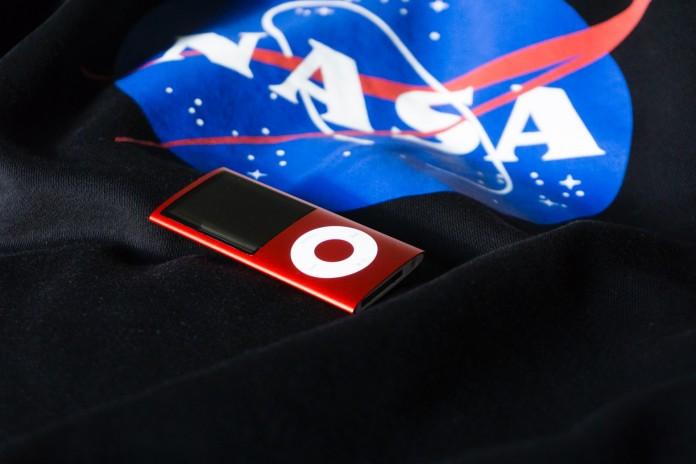Since the inception of NASA by President Dwight D. Eisenhower in 1958, NASA and the funding thereof has been a relatively contentious topic. Not because of the research and space exploration NASA is conducting but rather the price-per-taxpayer of said space-related missions. Every 4 years, as political candidates take the podium to sell the public on their character and platform, the funding of seemingly erroneous departments becomes a subject of contest. Traditionally, Republicans supported space exploration more than Democrats, whereas Democrats support space and climate research more than Republicans. Both parties have their respective reasons, which is a compartment of tribbles I won’t open, but the main problem with NASA’s funding is that the general public is rarely clued in by media outlets as to the impact NASA has on the ground. In today’s The Cosmic Mariner, instead of traveling into the cosmos, we’re going to take a brief look at the incredible technological innovations the agency has produced for us in return.
Spinoffs, as they’re called, are products originally developed by or for NASA that eventually make their way into the business market through the Technology Transfer Program. Every year, approximately 50 spinoff technologies are released to businesses and over 2,000 technological transfer transactions occur. To add a sense of wonder to these numbers, NASA has an annual budget of approximately $23.3 billion (2021). While that sounds like an enormous amount of money, it’s actually only 0.5% of the overall federal budget of the United States. That equates to less than half of a whole penny per tax dollar. Americans spend roughly $37 billion on pizza annually. I would guess I wholeheartedly contribute $36 billion of that but I digress. So, why is that minuscule budget important, and what’s so special about the spinoff program? Here’s why.
Think back to when you were a kid fighting for your life in the battle of the SuperSoakers. Jets of pressurized water careening through the air onto the distraught faces of your battle-worn enemy! Is that a tear in their eye or the water from your empty water cannon? Muhahahaha! *places pinky on mouth like Dr. Evil*. Well, to your surprise, you were waging neighborhood war with space-age technology. Yep, NASA did invent the SuperSoaker. Or, at least NASA engineer Dr. Lonnie Johnson did while working on a new refrigerant fluid. But while NASA didn’t directly invent the SuperSoaker, they did invent abrasion-resistant glasses. As is common with most NASA spinoffs, the scratch-resistant glasses that dominate the American market began in an unrelated field. The technology was first experimented with when developing water purification systems for spacecraft and was later adapted for use on astronaut visors. Years later, the sunglass manufacturer Foster-Grant invested in the technology, and lo and behold, we have scratch-resistant sunglasses. But that’s just the start of the spinoff web.

Need a medical diagnosis through the use of an MRI or CT scan? Thank’s NASA. While NASA didn’t invent the MRI, NASA did invent Digital Signal Processing which is used in tandem with MRIs and CT scans to enhance the imaging of organs and other anatomical structures for diagnostic purposes. This tech was originally designed for the enhancement of images of the lunar surface/moon during the Apollo Missions. Do you love showing off your best duck impression in selfies? Well, for better or for worse, you can thank NASA for that too. The CMOS sensors found within ⅔ of cellphone cameras were originally developed by NASA and JPL for small yet high-fidelity imaging devices on interplanetary spacecraft. Now, we use them every day for selfies, scanning documents, and general photography. However, NASA didn’t just invent CMOS sensors; they developed the entire realm of modern digital photography. Kodak and AT&T Bell Labs eventually purchased the CMOS technology and, as they say, the rest is history. As a photographer myself, I really appreciate the 0.5c/per tax dollar my parents paid for that technological innovation.

Here’s where things get really interesting. You know that mouse you love? No, not Stuart Little, but the mouse you use with the computer? NASA invented it as a means of simple computer navigation in space. Do you love the calming sensation of sleeping on clouds? That’s right, NASA invented memory foam for better aircraft seat impact absorption and good ol’ butt cushioning. I don’t know about you, but my butt, which already has enough cushion for the pushin’, loves memory foam seats! How about running shoes? The cushioned soles are space-age technology. Water filtration? NASA. For obvious reasons. Baby formula? NASA. We all love LEDs; especially the ones that change colors! NASA used them to light up space before they were cool. Although, arguably, they’re cooler on spacecraft…Speaking of LED’s, the technology that allows us to wirelessly control LED’s, microwaves, and the entire smart appliance lot came from NASA’s Embedded Web Technology software. Cordless vacuums? Prosthetic limbs? Cochlear implants? Insulin pumps? Lasik surgery? GPS? 3D printing? Artificial hearts? Grooved highways? Wireless headphones? Solar cells? Home insulation? Laptop computers! Yea, all NASA. The list goes on, and on, and on.
So, next time you use an innovative product, there’s a very good chance NASA had a part in inventing it, or at the least, inventing the technology that made it possible. So, as Americans, you should be proud that you pay 0.5c/per tax dollar to save lives, enrich the lives of children, light the paths of future generations, and yes, launch big ol’ rockets into space.






